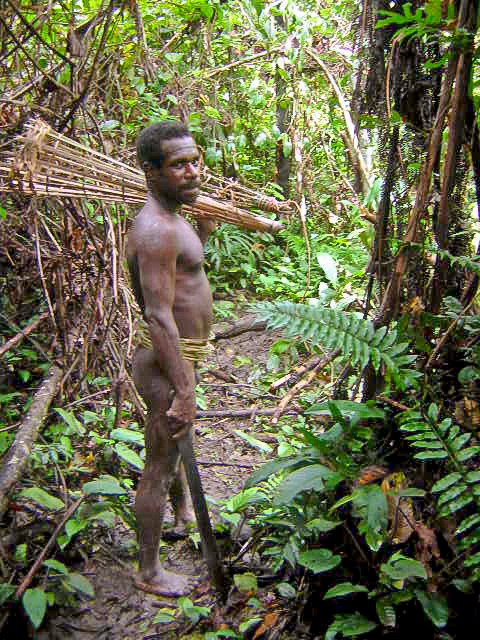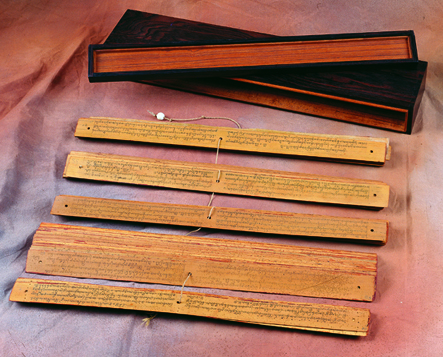|
Zorop Language
Yafi, also known as Zorop, is an Eastern Pauwasi language of West New Guinea. It is spoken in Warlef village, Senggi District, Keerom Regency Keerom Regency is one of the regencies (''kabupaten'') in the Papua Province of Indonesia. It was formed from the eastern districts then within Jayapura Regency with effect from 12 November 2002. It covers an area of 9,365 km2, and had a po .... Basic vocabulary Below are some basic vocabulary words in Zorop. : References East Pauwasi languages Languages of Western New Guinea {{papuan-lang-stub ... [...More Info...] [...Related Items...] OR: [Wikipedia] [Google] [Baidu] |
Indonesia
Indonesia, officially the Republic of Indonesia, is a country in Southeast Asia and Oceania, between the Indian Ocean, Indian and Pacific Ocean, Pacific oceans. Comprising over List of islands of Indonesia, 17,000 islands, including Sumatra, Java, Sulawesi, and parts of Borneo and New Guinea, Indonesia is the world's largest archipelagic state and the List of countries and dependencies by area, 14th-largest country by area, at . With over 280 million people, Indonesia is the world's List of countries and dependencies by population, fourth-most-populous country and the most populous Islam by country, Muslim-majority country. Java, the world's List of islands by population, most populous island, is home to more than half of the country's population. Indonesia operates as a Presidential system, presidential republic with an elected People's Consultative Assembly, legislature and consists of Provinces of Indonesia, 38 provinces, nine of which have Autonomous administrative divisi ... [...More Info...] [...Related Items...] OR: [Wikipedia] [Google] [Baidu] |
Western New Guinea
Western New Guinea, also known as Papua, Indonesian New Guinea, and Indonesian Papua, is the western half of the island of New Guinea, formerly Dutch and granted to Indonesia in 1962. Given the island is alternatively named Papua, the region is also called West Papua (). It is one of the seven geographical units of Indonesia in ISO 3166-2:ID. Lying to the west of Papua New Guinea and geographically a part of the Australian continent, the territory is almost entirely in the Southern Hemisphere and includes the Biak and Raja Ampat archipelagoes. The region is predominantly covered with rainforest where traditional peoples live, including the Dani of the Baliem Valley. A large proportion of the population live in or near coastal areas. The largest city is Jayapura. The island of New Guinea has been populated for tens of thousands of years. European traders began frequenting the region around the late 16th century due to spice trade. In the end, the Dutch Empire emerged ... [...More Info...] [...Related Items...] OR: [Wikipedia] [Google] [Baidu] |
Senggi District
Senggi District is a district in Keerom Regency, Papua, Indonesia. Villages As of 2018, Senggi consists of 7 administrative villages (''kampung'').Badan Pusat Statistik Kabupaten KeeromKecamatan Senggi Dalam Angka 2018 The indigenous Papuan languages The Papuan languages are the non- Austronesian languages spoken on the western Pacific island of New Guinea, as well as neighbouring islands in Indonesia, Solomon Islands, and East Timor. It is a strictly geographical grouping, and does not imply ... spoken in each village are also listed below. * Elseng ( :Elseng language speakers) * Senggi ( :Viid language speakers) * Warlef ( :Zorop language speakers) * Woslay * Usku ( :Usku language speakers) * Waley * Namla ( :Namla language speakers) References Districts of Papua (province) {{Papua-geo-stub ... [...More Info...] [...Related Items...] OR: [Wikipedia] [Google] [Baidu] |
Keerom Regency
Keerom Regency is one of the regencies (''kabupaten'') in the Papua Province of Indonesia. It was formed from the eastern districts then within Jayapura Regency with effect from 12 November 2002. It covers an area of 9,365 km2, and had a population of 48,536 at the 2010 CensusBiro Pusat Statistik, Jakarta, 2011. and 61,623 at the 2020 Census;Badan Pusat Statistik, Jakarta, 2021. the official estimate as at mid 2022 was 63,499 (comprising 33,403 males and 30,096 females).Badan Pusat Statistik, Jakarta, 28 February 2024, ''Kabupaten Keerom Dalam Angka 2024'' (Katalog-BPS 1102001.9111) The regency's administrative centre is at the town of Waris. Keerom Regency is located in the border area between Indonesia and Papua New Guinea, in Papua Province. It borders Green River Rural LLG and Amanab Rural LLG of Sandaun Province (in Papua New Guinea) to the east, Highland Papua Province to the south and Jayapura Regency Jayapura Regency is one of the regencies (''kabupaten'') in Pa ... [...More Info...] [...Related Items...] OR: [Wikipedia] [Google] [Baidu] |
Pauwasi Languages
The Pauwasi languages are a likely family of Papuan languages, mostly in Indonesia. The subfamilies are at best only distantly related. The best described Pauwasi language is Karkar, across the border in Papua New Guinea. They are spoken around the headwaters of the Pauwasi River in the Indonesian-PNG border region. Based on earlier work, the East and West Pauwasi languages of Indonesia were classified together in Wurm (1975), though he (and later researchers) did not recognize that Yuri (Karkar) of Papua New Guinea was also East Pauwasi. That connection was made by Usher, though anthropologists had long known of the connection. Later the South Pauwasi languages were also identified by Usher, and the West Pauwasi family tentatively expanded. Wichmann (2013), Foley (2018) and Pawley & Hammarström (2018), noting the sharp differences among the three groups, are agnostic about whether West Pauwasi, East Pauwasi and South Pauwasi are related.Wichmann, Søren. 2013A classificat ... [...More Info...] [...Related Items...] OR: [Wikipedia] [Google] [Baidu] |
East Pauwasi Languages
The East Pauwasi languages are a family of Papuan languages spoken in north-central New Guinea, on both sides of the Indonesia-Papua New Guinea border. They may either form part of a larger Pauwasi language family along with the Western Pauwasi languages, or they could form an independent language family. Languages According to Timothy Usher, the East Pauwasi languages, which seem to form a dialect chain, are: ;East Pauwasi River * Zorop (Yafi) *Emem–Karkar ** Emem (Emumu) ***North Emem ***South Emem **Karkar Karkar may refer to: * Karkar, Selseleh, a village in Iran *Karkar Island Karkar Island is an oval-shaped volcanic island located in the Bismarck Sea, about off the north coast of mainland Papua New Guinea in Madang Province, from which it is s ... (Yuri) Usher also identified the Karkar (Yuri) language as Pauwasi. Lexical reconstruction Some lexical reconstructions of Proto-East Pauwasi by Usher (2020) are: : Vocabulary comparison The following basic vocabulary ... [...More Info...] [...Related Items...] OR: [Wikipedia] [Google] [Baidu] |
West New Guinea
Western New Guinea, also known as Papua, Indonesian New Guinea, and Indonesian Papua, is the western half of the island of New Guinea, formerly Dutch and granted to Indonesia in 1962. Given the island is alternatively named Papua, the region is also called West Papua (). It is one of the seven geographical units of Indonesia in ISO 3166-2:ID. Lying to the west of Papua New Guinea and geographically a part of the Australian continent, the territory is almost entirely in the Southern Hemisphere and includes the Biak and Raja Ampat archipelagoes. The region is predominantly covered with rainforest where traditional peoples live, including the Dani of the Baliem Valley. A large proportion of the population live in or near coastal areas. The largest city is Jayapura. The island of New Guinea has been populated for tens of thousands of years. European traders began frequenting the region around the late 16th century due to spice trade. In the end, the Dutch Empire emerge ... [...More Info...] [...Related Items...] OR: [Wikipedia] [Google] [Baidu] |
Ethnologue
''Ethnologue: Languages of the World'' is an annual reference publication in print and online that provides statistics and other information on the living languages of the world. It is the world's most comprehensive catalogue of languages. It was first issued in 1951 and is now published by SIL International, an American evangelical Parachurch organization, Christian non-profit organization. Overview and content ''Ethnologue'' has been published by SIL Global (formerly known as the Summer Institute of Linguistics), a Christian linguistics, linguistic service organization with an international office in Dallas, Texas. The organization studies numerous minority languages to facilitate language development, and to work with speakers of such language communities in translating portions of the Bible into their languages. Despite the Christian orientation of its publisher, ''Ethnologue'' is not ideologically or theologically biased. ''Ethnologue'' includes alternative names and Exo ... [...More Info...] [...Related Items...] OR: [Wikipedia] [Google] [Baidu] |
SIL International
SIL Global (formerly known as the Summer Institute of Linguistics International) is an evangelical Christian nonprofit organization whose main purpose is to study, develop and document languages, especially those that are lesser-known, to expand linguistic knowledge, promote literacy, translate the Christian Bible into local languages, and aid minority language development. Based on its language documentation work, SIL publishes a database, '' Ethnologue'', of its research into the world's languages, and develops and publishes software programs for language documentation, such as FieldWorks Language Explorer (FLEx) and Lexique Pro. Its main offices in the United States are located at the International Linguistics Center in Dallas, Texas. History Early History William Cameron Townsend, a Presbyterian minister, founded the organization in 1934, after undertaking a Christian mission with the Disciples of Christ among the Kaqchikel Maya people in Guatemala in the earl ... [...More Info...] [...Related Items...] OR: [Wikipedia] [Google] [Baidu] |

